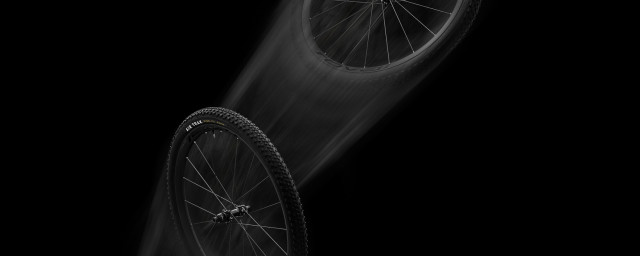SRAM GX Eagle Transmission first ride review

GX is SRAM’s mid-range offering that’s renowned for providing smooth and robust shifting at a comparatively palatable price point. Only a few months after the release of the radical XX and XO Transmission that had everyone and their mums standing on their derailleurs, the drivetrain giant has distilled this notion into the GX Eagle AXS Transmission pictured here - while making a few neat tweaks, too. We've been testing one ahead of the launch and here are our very first impressions.
- The best trail and enduro mountain bike wheelsets, tried and tested
- Wait... How much is the new SRAM T-Type kit?
- Five reasons why you should have a hardtail
Back in March, SRAM shook up the drivetrain space with the launch of its XX and XO Eagle Transmission drivetrains which, most notably, ditched the derailleur hanger in favour of a direct-mount mech that bolts onto the UDH dropout (now found on many modern mountain bikes). However, that’s not all that’s been ditched as limit screws and B-tension screws have gone AWOL, too. It also uses SRAM’s AXS tech, which means there aren’t any cables either.
However, at the GX level, the derailleur changes even more so than before in a number of ways. Most clearly, the location of the battery has shifted so it now sits just under the mounting bolt. This revised position has been chosen to better protect the battery and to keep the drivetrain shifting crisply.
Another noteworthy feature is that the cage can be removed without the need for tools. What’s important here is that the cage alone can be upgraded to XX or XO level, which is ideal if you would like to shed a few grams. Just turn the cage towards the derailleur body and it’ll unscrew.
SRAM has built GX Transmission to be a bit more durable, too, so, at the expense of weight savings, the GX T-Type mech is constructed with a steel inner cage. Furthering the theme of robustness are replaceable skid plates as well as a replaceable outer link. Of course, it uses the direct mount, Hangerless Interface that mounts the mech around the rear thru-axle. Something that should be noted is that this derailleur doesn’t come with the Magic Pulley that you’ll find on the XX alternative but it can be upgraded to run it.
The GX T-Type crank is designed to balance form and function; though this one is built using forged aluminium and there are no fancy holes. What is present, however, are the removable composite bash guards that are attached via T25 bolts. SRAM also offers an e-MTB-specific GX crankset that’s designed to fit Brose and Bosch motors or any that use an ISIS system.
The new GX Eagle T-Type cassette, like the other Transmission cassettes, is where a lot of the magic happens. This one gets the same X-SYNC design which should mean that it’ll shift smoothly under load. The cassette is nickel plated and uses what SRAM calls PinDome construction for gears one to eight, followed by a one-piece ‘mini-cluster’ for nine to 12. It’s designed to run a 55mm chain line for a better angle, apparently improving durability and shifting. As before, it offers a 520% range but the gear steps have been tweaked so now there's a 38 and 44T cog.
Rounding off the drivetrain is a flat-top chain that uses solid pins for durability. The direct-mount chainring comes in three sizes, 30T to 34T and the Pod Ultimate remote is the very same as you’ll find on the XX and XO models. Handily, there are two sets of buttons for the remote in the box offering a level of customisation.
As for weights, there’s only a bit of a jump but that’s to be expected at this lower price and burlier build. Using the off.road.cc office’s trusty Park Tool DS-2 scale, the cassette weighs in at 445g, the mech 486g and the Pod remote 11g. The drive side crank with a 32T chainring is 411g and the non-drive side crank is 329g. As for an uncut chain, that’s 283g. Together that makes for a 1,960g drivetrain excluding the bottom bracket, which isn't too much weightier than XO - in fact, it's just 74g heavier.
SRAM GX Eagle Transmission - Installation
As a Transmission product, installing the GX Eagle Transmission drivetrain is a little different but SRAM does a great job of hand-holding throughout the process with both easy-to-follow instructions and a video. For my installation, I stuck to the instructions.
Generally, everything’s the same as usual: winding in the BB, bolting on the crank, and setting in the shifter. SRAM even has a very useful bottom bracket spacer guide. As you might imagine, things change when it comes to the derailleur.
It’s all about bolting everything together loosely, then using the adjustment cog on the cassette to set B-tension by pulling back on the derailleur and then tightening everything down. Of course, there are a couple of other things that you’ll need to do but once the derailleur’s position is set and torqued to spec, and the indexing is done, that’s installation complete. Without having to fuss with cable tension, limit screws and a finicky B-tension, it’s incredibly simple to get precise and smooth shifting, especially compared to cable-actuated and even current AXS drivetrains.
In terms of gear indexing, a benefit of AXS in general is that it offers the opportunity to micro-adjust. This allows the user to set the derailleur's position under each cog on the cassette, thus allowing for very fine tuning of shifting performance up and down the cassette. It’s easily done, too, and can be tweaked on-the-fly.
T-Type or Transmission drivetrains are only compatible with other T-Type kits which is handy if you’re looking to mix and match within that ecosystem. But that does mean entry to Transmission requires a significant outlay (although cheaper than it was before). £1,180 to be precise.
SRAM GX Eagle Transmission - Ride impressions
Having ridden XX during my time on the Specialized S-Works Levo SL Gen II and XO on the Yeti SB135 LR T3, I had a reasonable idea of what to expect from GX Transmission. Of course, the curiosity was in how its greater weight and lower asking price would affect its performance. Since receiving a press sample a couple of weeks back, I’ve managed to get a number of hours in with this build, including a race scenario and I’m happy to report that shifting performance is nearly identical to that of SRAM’s pricier offerings.
Shifting is crisp and effortless. Not only is that due to the harmonious workings of the derailleur and cassette but having just a tactile button to press to instruct the derailleur to guide the chain to the desired cog is a bit of a luxury. The Pod remote, while something I wasn’t sure about to start with, provides good ergonomics and a shed load of adjustment, including lateral movement and that vertical rotation of the whole unit. I would like more adjustment though and perhaps just more swing under the bar, but that’s more a limitation of SRAM’s Matchmaker system.
Where the real benefits of GX Transmission are gained is shifting under load. No longer does the rider need to think about their shifts in so much detail because the drivetrain shifts consistently regardless of how hard you’re putting the power down. Mid-descent, this has meant that I could upshift a couple of gears before a corner, and comfortably sprint out of it, knowing that I’m not going to mangle the mech or lose any power as the drivetrain struggles to change gear. The same goes uphill, which comes especially useful during mid-stage climbs where it’ll downshift cleanly without screaming about it. Since installing this drivetrain, I’ve been shifting more almost everywhere, simply because of how accommodating Transmission makes it.
The shifting experience elevates the overall experience and sets itself apart from its non-T-Type counterparts. There’s just less thought required when shifting which boosts power consistency when sprinting and adds peace of mind. Much like GX Transmission’s general operation, shifting is very quiet.
Though one thing I’ve noticed is that changes between gears aren’t quite as speedy as with cabled or original AXS drivetrains. There’s a small delay as the mech wrenches the chain onto the next easier gear but, in my general use, this isn’t something that’s caused any kind of issue. I found this to be less clear with upshifts as they remained silky smooth, and sometimes I couldn’t even feel the chain swap cogs.
Something that's come as a bit of a niggle is that the very cool-looking bash guards take up all the space on the outer side of the chain (it's required to fit a chain guide). As of yet, this is yet to pose an issue as the derailleur's clutch is pretty strong but only time will tell as chain retention may degrade as the chain wears.
While GX Eagle Transmission presents a saving of a few hundred pounds against XX and XO, it clearly still comes with quite the asking price and SRAM admits, it’s a premium product. Even though it’s the cheapest of the three, it still has a premium feel about it. However, the greatest question is whether it’s worth the price of admission.
Many will say no, as current drivetrains shift perfectly well and I don't disagree here. However, few carry the combination of GX Transmission’s slick-shifting performance and completely fit-and-forget installation. I could very happily go back to cabled and non-Transmission shifting but GX T-Type allows the rider to shift in a more efficient way which requires far less thought. And where there’s less thought in changing gears, for me, there’s a better mountain biking experience.
While definitely still expensive compared to even original AXS drivetrains, what GX Eagle Transmission represents is an exciting future for mountain bike drivetrain tech where shifting is crisp and smooth, quality of life is elevated and adjustment is almost completely unnecessary. The cash outlay may represent a tall order for many but the return on investment will save you a lot of money (and headaches) down the road.
We'll be keeping a very close eye on its performance as we'll put GX Eagle Transmission through its paces over the coming months to see how it holds up through a range of conditions and whether its performance remains consistent as it wears. Keep an eye out for a long-term review.
















